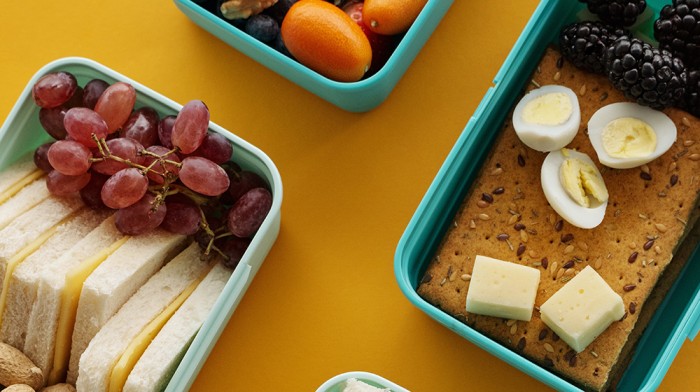
Starting off the school year on the right foot is a big deal, and so is starting it off with the right plate.
Catherine Larson-Nath, MD, is a pediatric gastroenterologist with University of Minnesota Physicians (M Physicians), and she says healthy eating is one of the best ways to set students up for success in the school year. 
“If you're really hungry, you can't pay attention. You're thinking about eating. And so that's one of the many reasons it's very important.”
With the first day of school nearby, Dr. Larson-Nath has insight for parents and guardians who want to make sure their child has the food they need to succeed.
The most important meal of the day?
Children need to have a strong foundation for the day with breakfast to help them get the most out of their time at school. At the same time, she says, all meals are important.
“There've been numerous studies over the decades to show that having a good breakfast actually leads to better attention test scores and memory, among other things within school,” she says.
Dr. Larson-Nath explains, though, that breakfast may also be the most challenging meal of the day since it’s early in the morning.
To help make it simpler to think about breakfast for kids, she says it comes down to making sure that the meal has enough protein and complex carbohydrates, like whole grain bread, to sustain kids until lunch. Nutritious and quick-to-prepare foods may include:
- Hard Boiled eggs
- Toasted whole grain bread with avocado or peanut butter
- A piece of easy-to-eat fruit like a banana or apple
- A cup of Greek yogurt or a cheese stick
- Low-sugar cereal with fruit added to it
Dr. Larson-Nath also says that, portioned appropriately, these foods are often ideal snack options too.
Making the most of lunchtime
As a result of new laws passed in 2023, students in Minnesota will not have to pay for lunch at school, and Dr. Larson-Nath says it will continue to help students’ learning and health and is one step towards providing a level playing field for every child.
While lunch at school may be provided, some students or families may still choose to bring lunch from home. Dr. Larson-Nath has tips for that, too.
“Many kids are usually rushed during their lunchtime,” she says, “In some places, they may not have even more than 15 minutes, so having things that are easy to eat is important.”
She suggests making sure that there aren’t items that are hard for a child to open, especially for kids at an early age.
Establishing healthy eating patterns for kids
Another key to ensuring students are getting the nutrition they need is to model healthy eating habits at home with a variety of foods. And if a child doesn’t immediately eat or like a new type of food, Dr. Larson-Nath says that’s normal.
“It can take 15 to 20 exposures to a food for a young child to start to like them and eat them at meals,” she says, adding, “The key is to offer both preferred and non-preferred foods as much as possible.”
For students in their teenage years, Dr. Larson-Nath says to look out for signs of disordered eating, like if they continually and purposely avoid certain foods, always appear hungry or feel ill after eating.
If that happens, she says parents and guardians should have open conversations with them about if or why they are not eating at school and troubleshooting ways with them that can help make it better.
“That could look like helping them make choices on what to eat or, if they’re able, going through the lunch calendar and choosing what days to eat a hot lunch at school and what days to bring a lunch from home,” she says.
If you have continued concerns about a child’s health and nutrition, Dr. Larson-Nath says that’s likely an important time to talk with a doctor.
The bottom line? Parents and guardians can help their students succeed by resetting healthy eating habits at the start of the school year and helping them make adjustments along the way.